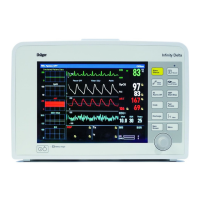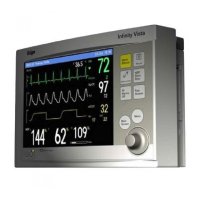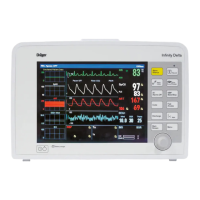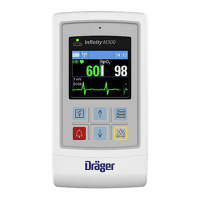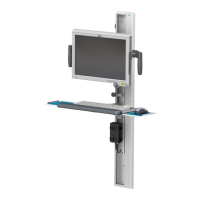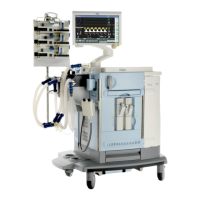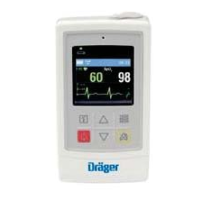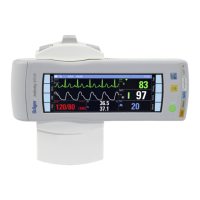B-4 DELTA/DELTA XL/KAPPA VF8
B T
ECHNICAL DATA
Electromagnetic Emissions
NOTE:
Cables and accessories not specified within the instructions for use are not
authorized. Using other cables and/or accessories may adversely impact safety,
performance and electromagnetic compatibility (increased emission and
decreased immunity).
The equipment should not be used adjacent to or stacked with other equipment;
if adjacent or stacked use is inevitable, the equipment should be observed to
verify normal operation in the configuration in which it will be used.
This patient monitoring equipment may communicate over a 2.4 GHz 802.11
b/g wireless network. Other equipment could interfere with data reception in
this wireless network, even if that equipment complies with CISPR emission
requirements. When using patient monitoring equipment that communicates
over a wireless network, carefully ensure that any (existing or new) wireless
systems (for example, cell phones, pager systems, cordless phones, etc.) are
compatible. For example, a Bluetooth compatible device in the 2.4 GHz
frequency band may interfere with the patient monitor's wireless
communication. For details on wireless deployment, contact your Dräger
representative.
Low amplitude signals such as EEG and ECG are particularly susceptible to
interference from electromagnetic energy. While the equipment meets the
testing described below, it is not a guarantee of perfect operation, the 'quieter'
the electrical environment the better. In general, increasing the distance
between electrical devices, will decrease the likelihood of interference.
This equipment is intended for use in the electromagnetic environment specified below. The
user of this equipment should assure that is used in such an environment.
Emissions:
Compliance
according to:
Electromagnetic environment:
RF emissions (CISPR 11) Group 1 The monitor only uses RF energy internally.
Therefore, its RF emissions are very low and
are not likely to cause any interference in
nearby electronic equipment. Also see the
following note.
CISPR emissions
Classification
Delta - Class B
Delta XL -Class B
Kappa - Class B
The equipment is suitable for use in all
establishments including domestic
establishments and those directly connected
to the public low-voltage power supply
network that supplies buildings used for
domestic purposes.
Harmonic emissions
(IEC 61000-3-2)
Class A
Voltage fluctuations / flicker
(IEC 61000-3-3)
Complies

